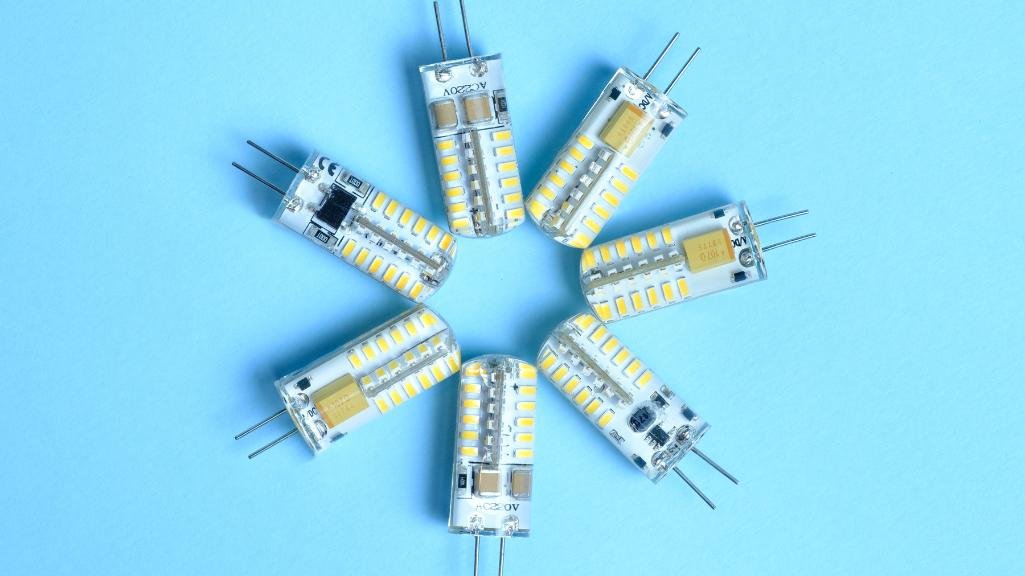Illuminating the Future: A Comprehensive Guide to Light Emitting Diodes (LEDs)
Devin Barton
. 3 min read
Light Emitting Diodes (LEDs) have emerged as one of the most significant technological advancements in the field of lighting and display solutions. From humble beginnings as indicator lights in electronic devices, LEDs have undergone remarkable developments and become an essential part of our daily lives. This article explores the history, working principles, applications, advantages, and future prospects of Light Emitting Diodes, while shedding light on how this innovative technology has even found its way into modern communication tools like video chat, enhancing our connections in the digital age.

History and Development of LED
The concept of electroluminescence, the phenomenon where a material emits light in response to an electric current, was first observed in the early 20th century. However, the practical implementation of LEDs only became a reality in 1962 when Nick Holonyak Jr., a researcher at General Electric, invented the first visible LED. This LED emitted red light and paved the way for further developments.
Over the years, advances in semiconductor materials, notably gallium arsenide, allowed for the creation of LEDs emitting different colors, such as green, blue, and yellow. The breakthrough in blue LED technology was crucial, as it enabled the development of white LEDs through phosphor conversion. Today, RGB (Red, Green, Blue) LEDs are commonly used to produce a wide range of colors.
Working Principles of LED
LEDs operate based on the principle of electroluminescence. They are solid-state devices consisting of a semiconductor chip placed within a transparent epoxy resin or plastic casing. The chip is composed of different layers, including a p-n junction, where electrons and holes recombine, releasing energy in the form of photons (light).
When a voltage is applied to the LED, current flows through the semiconductor, causing the electrons and holes to combine. The energy released during this process determines the wavelength and color of the emitted light. The choice of semiconductor materials and the presence of various impurities within the chip influence the LED's color output.
Applications of LED
The widespread adoption of LEDs across various industries is a testament to their versatility and energy efficiency.
Some of the most prominent applications include:
a. Lighting: LEDs are used in general lighting applications, including residential, commercial, and industrial settings. They offer significantly higher energy efficiency, longer lifespans, and better environmental sustainability compared to traditional incandescent and fluorescent bulbs.
b. Displays: LED technology has revolutionized the display industry, leading to the development of LED TVs, computer monitors, and large-scale outdoor displays (LED billboards). Their ability to produce vibrant colors, higher contrast ratios, and better energy efficiency has made them the preferred choice over older technologies like cathode ray tubes (CRTs).
c. Automotive Lighting: LEDs have found widespread use in automotive lighting, including headlights, taillights, and indicators. Their quick response time and low power consumption enhance safety and fuel efficiency in vehicles.
d. Backlighting: LEDs are extensively used for backlighting in LCD (Liquid Crystal Display) panels, ensuring brighter and more energy-efficient screens in devices like smartphones, tablets, laptops, and televisions.
e. Signage and Illumination: LEDs are popularly used in signs and decorative lighting due to their ability to create visually appealing effects, energy efficiency, and longer lifespans.
Advantages of LEDs
The growing popularity of LEDs is attributed to several advantages:
a. Energy Efficiency: LEDs consume significantly less energy compared to traditional lighting technologies, resulting in reduced electricity bills and lower carbon emissions.
b. Longevity: LEDs have a much longer operational life, often exceeding 50,000 hours, which reduces maintenance costs.
c. Durability: LED technology is solid-state, making LEDs more robust and resistant to shocks and vibrations.
d. Instantaneous Response: LEDs reach full brightness instantly, making them ideal for applications where immediate illumination is required.
e. Environmental Benefits: LEDs are free from toxic materials like mercury, making them more environmentally friendly and easier to recycle.
Future Prospects LED
The future of LEDs looks promising, with ongoing research and development focused on enhancing efficiency, reducing costs, and exploring novel applications. Innovations in materials and manufacturing techniques may lead to even higher energy efficiency and more sustainable LED products.
The continued integration of LEDs with the Internet of Things (IoT) technology may result in smart lighting solutions, allowing for automated control, increased interconnectivity, and personalized lighting experiences. Additionally, advancements in micro-LED technology hold the potential to revolutionize display technology further, enabling even thinner, brighter, and more energy-efficient screens.
Conclusion
Light Emitting Diodes (LEDs) have come a long way since their invention, transforming the lighting and display industries and becoming an integral part of modern technology. Their energy efficiency, longevity, and versatility make them a compelling choice for a wide range of applications. As research and development continue, LEDs are poised to play an even more significant role in shaping the future of lighting and visual displays, illuminating our lives in more ways than we could have imagined.
More Stories from
Secure Encryption Payment Protocol: Ensuring Safe Transactions in the Digital Age
Learn about the benefits of SEPP, its role in preventing fraud, and how it fosters consumer trust in the rapidly growing world of online commerce.
Understanding Security Association Database in Computer Networks
This article explores the significance of the Security Association Database (SAD) in computer networks.
International Telecommunication Union (ITU): Bridging the Global Digital Divide
The International Telecommunication Union (ITU) is a specialized agency of the United Nations, dedicated to promoting global connectivity.
The World Wide Web: Connecting Humanity Across Time and Space
From its inception by Sir Tim Berners-Lee to its exponential growth, learn how the Web revolutionized communication, commerce, and society at large.
Introduction to the Theory of Automata and Formal Languages
Learn how automata models and grammars shape programming languages, artificial intelligence, and more.
.png?height=40)









.png?width=40&aspect_ratio=1:1)
